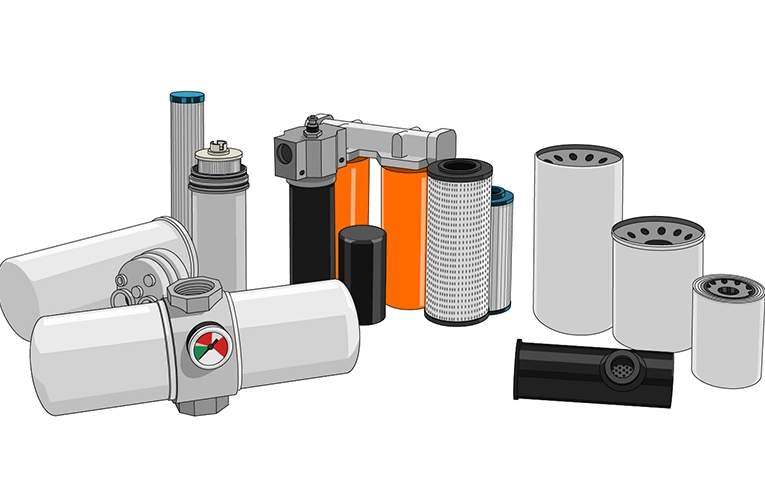As we know, the biggest enemy of hydraulic systems is the dirty fluid used and the mixing of foreign objects/pollutants into the system. This damages the components and shortens the system life dramatically. Approximately 75% of the problems encountered in hydraulic systems are caused by dirtiness. It has great importance to use filters and to filter or change the oil regularly.
Before moving on to filter types, let’s talk about what micron is. One thousandth of 1 mm is called a micron. For example, we can think that a hair strand is 75 microns and a grain of salt is 100 microns. The clearances between the gears of a gear pump and the body/bearing are in the range of 0.8 – 6 microns, while the clearance between the spool of a control valve and the valve body is in the range of 12-25 microns. For this reason, we can say that foreign particles in the fluid affect the operation of the hydraulic components.
We can divide the filters used in hydraulic systems into three groups according to where they are used:
1. Suction filters: These filters are surface type, coarse filters that connect to the pump suction line and protect the pump. Usually 100 micron models are used.
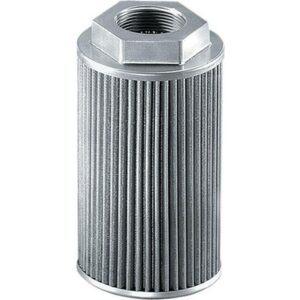
2. Pressure filters: These are depth type, high pressure resistant, costly filters connected to the pressure line. It protects components such as directional control valves and motors in the system. 5 or 10 micron models are used. Thanks to the check valve in its structure, when the filter is clogged, a warning is sent to the clogging indicator. Thus, filter element is inspected. When the indicator reaches the yellow area, the filter element must be replaced. The filter body can be made of steel or aluminum material.
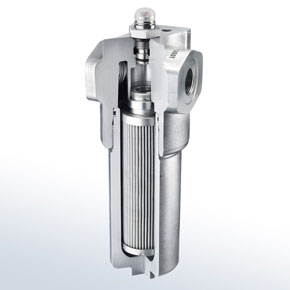
3. Return filters: These are the filters that are connected to the return line of the fluid circulating in the system back to tank. Generally, models with 10-25 microns are used. It has a check valve in its structure. In case of clogging or when oil flow is blocked, the fluid returns to the tank via check valve.
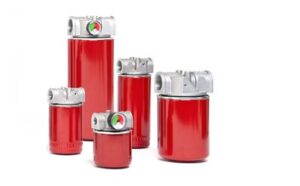 When we determine a filter size, it will be useful to choose a filter that will handle 1.5 times the flow rate of the pump practically. For example, if our system flow rate is 30 liter/min, we can choose a filter that will capable of 45 liter/min flow rate. Otherwise, oil passage will be difficult, some of the fluid may pass over the check valve without being filtered, and the filter element may be damaged.
When we determine a filter size, it will be useful to choose a filter that will handle 1.5 times the flow rate of the pump practically. For example, if our system flow rate is 30 liter/min, we can choose a filter that will capable of 45 liter/min flow rate. Otherwise, oil passage will be difficult, some of the fluid may pass over the check valve without being filtered, and the filter element may be damaged.
Finally, let’s talk about the beta ratio, which expresses the efficiency of the filter element. This ratio expresses the ratio of the number of particles entering the filter element in a certain size to the number of particles leaving. In fact, we are interpreting how many particles a filter can hold. Preferring filters with high beta ratio is important for system maintenance.
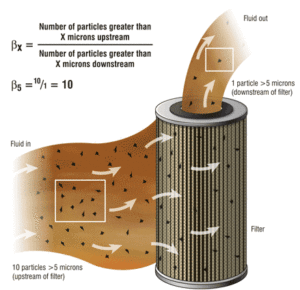
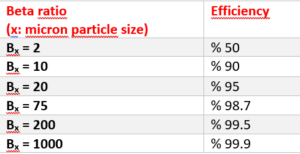
Pictures are used for educational purposes.
Sources
Garnett Cross Training in the Maintenance of Oil Hydraulics
Temelden Uygulamaya Hidrolik Eğitimi – Bünyamin Ekmen
https://www.machinerylubrication.com/Read/1289/oil-filter-efficiency



